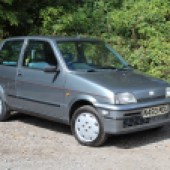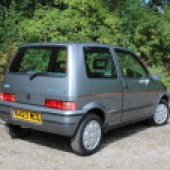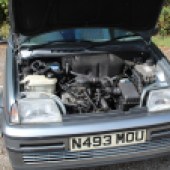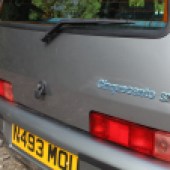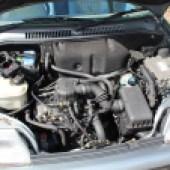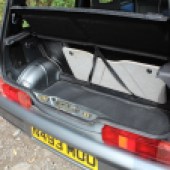The 1990s Fiat Cinquecento had a much shorter production run than its predecessors and successors; 30 years after its UK launch, is it worthy of being mentioned in the same illustrious company?
While its roomier efforts can justifiably be described as a mixed bag, if there’s one thing Fiat knows how to do well, it’s city cars. Having brought four-wheel motoring to masses with its 4 million-selling ‘Nuova’ 500, the Italian giant’s 126 replacement sold in even greater numbers and the modern day 500 has now racked up over 2.5 million units. Throw the increasingly collectable Panda in the mix and you’ve got another success story, but there’s one Fiat city car that still tends to go under the radar these days – the diminutive Fiat Cinquecento.
Named using the Italian word for 500 in a nod to its 1957 predecessor, the Fiat Cinquecento was launched in 1991 and would finally arrive in the UK in 1993, meaning the earliest UK cars are now celebrating their 30th birthdays. However, the roots for the car designed to replace the 126 go back to the early 80s. Elements from Fiat’s own designs were combined with the Beskid 106, a prototype developed in Poland by BOSMAL, which was controlled by FSM before it became Fiat-owned in 1992.
Built in the aptly named Tychy, the eventual result was a crisply styled city car featuring independent suspension front and rear, front disc brakes, side impact beams, crumple zone and galvanised body panels.
Until 1993, Fiat Cinquecento models produced in Poland were marketed as FSM rather than Fiat models, and were available with a longitudinally-mounted 704cc OHV two-cylinder engine inherited from the Fiat 126 Bis, only driving the front wheels this time. However, UK cars didn’t get this engine, and were initially available with an 899cc four-pot OHV that had its roots back to the ’50s. However, it did get a five-speed gearbox and fuel injection, making it good for a sober 41bhp.
Two versions were initially offered at the May 1993 launch – the standard model and the better-equipped SX including central locking, a sunroof and electric windows. In 1994 though, the range would be topped by the new Fiat Cinquecento Sporting. A contender to the contemporary Rover Mini Cooper, the Sporting featured a drop in standard ride height, a front anti-roll bar and 13-inch alloy wheels, plus colour coded bumpers and mirrors. The interior saw a tachometer added, along with a leather steering wheel and gear knob, spots seats and red seatbelts.
With its 1108cc SOHC ‘FIRE’ from the entry-level Punto of the same era, the Sporting produced 54bhp and made for a hugely entertaining urban runabout. Interestingly, the larger units were mounted transversely, making the little Fiat one of the few cars in the world available with both configurations at the same time.
The base model was renamed S in June 1995, but the rest of the range stayed as it was. In all, the Fiat Cinquecento would only be on sale in the UK for five years – much shorter than the 500 and 126, with its broadly similar Seicento replacement launched in 1998. Indeed, in Poland at least, the 126 would end up outliving the car that had been intended to replace it.
An impressive 1,164,525 Cinquecentos were built in total, but UK numbers have been decimated in recent years. The last decade has seen the number of Sporting variants on the road decrease tenfold, and in all there are thought to be only just over 300 Cinquecentos licensed in the UK. Fortunately, with the help of Newcastle upon Tyne auction house WB & Sons, we were able to experience a now-rare 899cc SX model dating from 1996. In very tidy condition and showing a mere 49,000 miles, it would give us a good indication of whether the Cinquecento deserves a place in the Fiat city car canon.
Settling into the cabin, the car’s cheeky city car persona is evident in the brightly coloured fabric trim and exposed metal on the inside of the doors, but it’s not as austere as you might expect. While there’s no proper glovebox and many of the controls are placed a little too far out of reach, the dash looks neat and the instruments are nicely displayed.
There’s plenty of room for storage in the door bins too, and the seats tip forward easily for access to the rear. The car’s tall, almost anti-styled profile allows enough room for loftier occupants, and in this SX model, we also get the luxury of that sunroof. The abruptly cut-off rear end design means the boot isn’t massive, but it’s well-shaped and the seats can be folded down for more room. Besides, with the rear window essentially the back end of the car, it’s easy to park.
The performance figures for this 899cc variant are not impressive. A 0-60mph time of 20 seconds, a sluggish 50-70mph time of nearly 22 seconds and a top speed of around 82mph don’t paint a picture of a powerhouse, but what those numbers fail to convey is the eagerness of the engine. It feels quicker than its 41bhp, and around town it inspires you to wring its neck, which is what all small Fiats should be about. And yet, its remarkably smooth and quiet. Even at motorway speeds, the five-speed Cinquecento cruses with seeming effortlessness – a world away from its two-pot predecessors.
It’s a remarkably comfortable car too, though the trade-off is noticeable body roll through the twisty bits. It still handles well but is not quite as agile as a Mini, and the steering is less incisive. Indeed, the latter is quite heavy and takes almost four turns lock-to-lock, but the turning circle is impressively small.
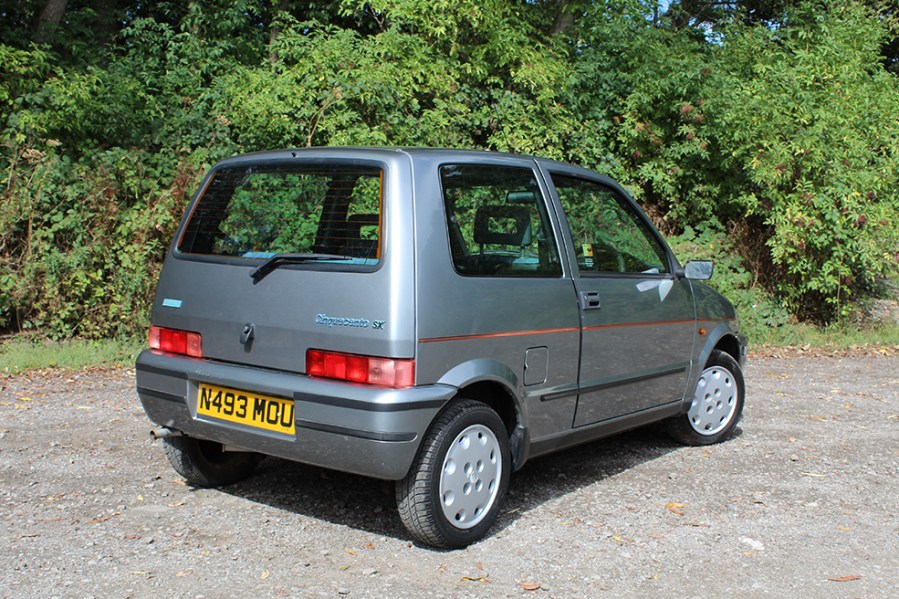
They’re surprisingly resilient cars too. The galvanised bodies generally stand up well to the rigours of time, with our test example appearing to be rust-free throughout. The interior was also in great condition, and typical of the generally hardy nature of the trim in these cars.
Best of all, the Cinquecento is still cheap. While values have increased as it has passed through its cheap banger phase, it’s still possible to buy one for the three figures, especially if it’s not a Sporting. A 1998 SX sold for just £692 at Anglia Car Auctions in April, with a 1996 car selling for £902 at Mathewsons last summer. Immaculate cars will cost more, but even a top-notch Sporting is unlikely to break the £2500 barrier unless it’s something truly special or has some competition provenance.
All told however, the basic Fiat Cinquecento amounts to a pleasant surprise. The refinement and performance on offer belie the facts and figures, and dare I say it, serve to make the Cinquecento a better spiritual successor to the original Nuova 500 than the 2007 re-make. Get yourself a sporting variant, and you get a useful slug of extra power too, plus tauter handling. As an affordable starter classic, both the 899cc and Sporting variants make a lot of sense.
So, does the Fiat Cinquecento deserve the lofty status of other small Fiats? To an extent, I believe it does. While not as influential as earlier models and not as commercially successful as more recent ones, it revolutionised the Tychy factory, opened up new markets, and arguably set Fiat on its way to a new generation of success.



